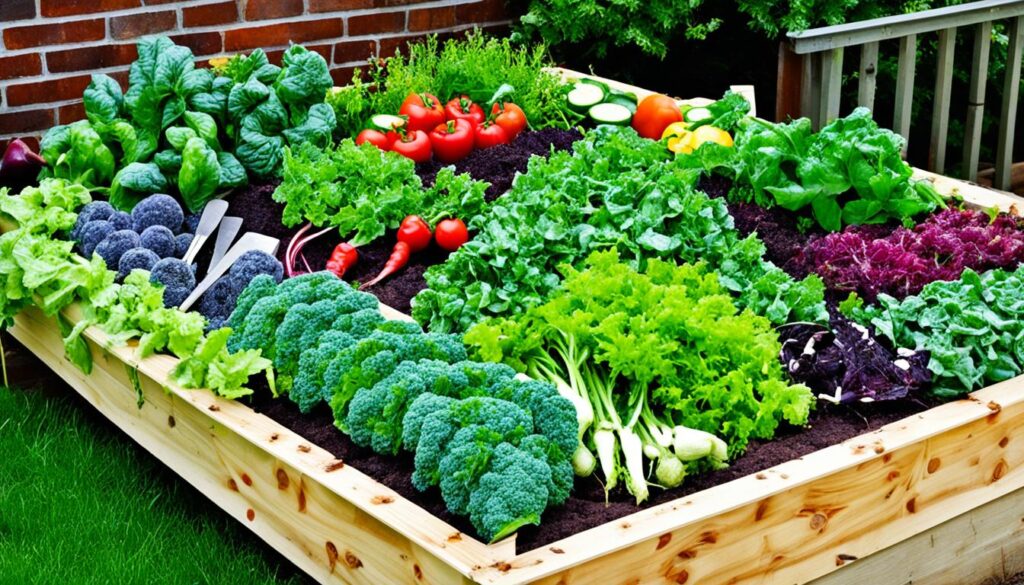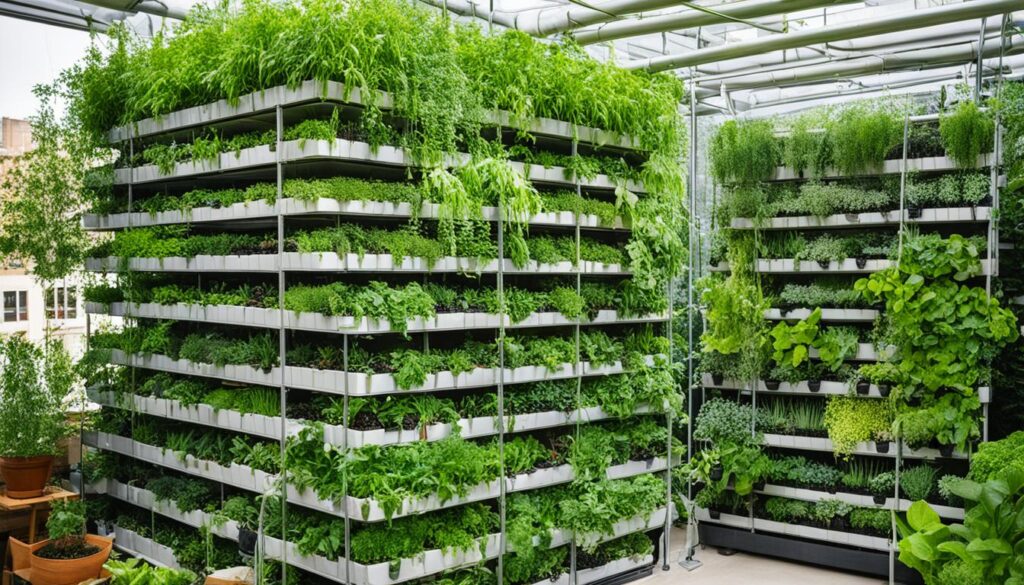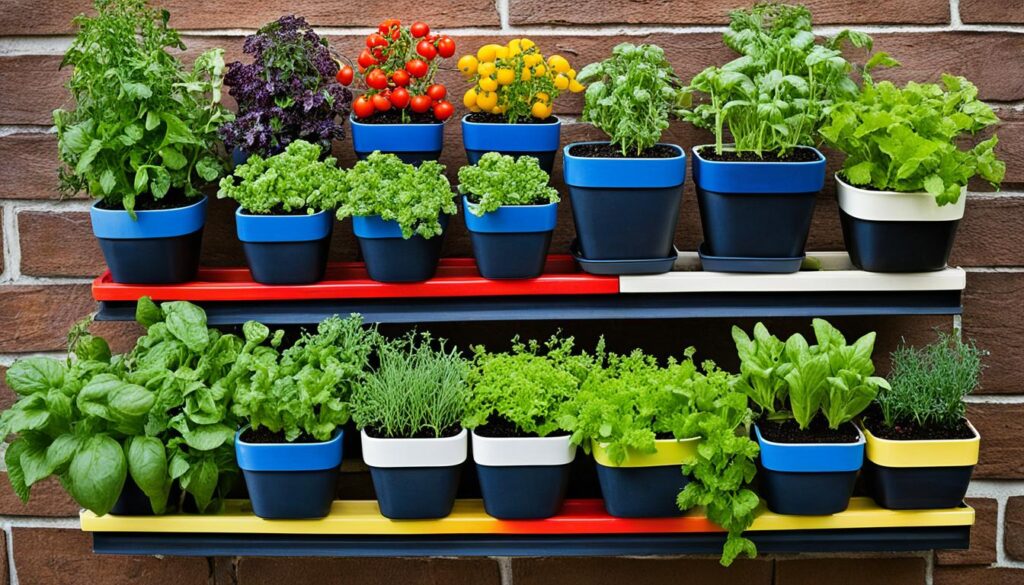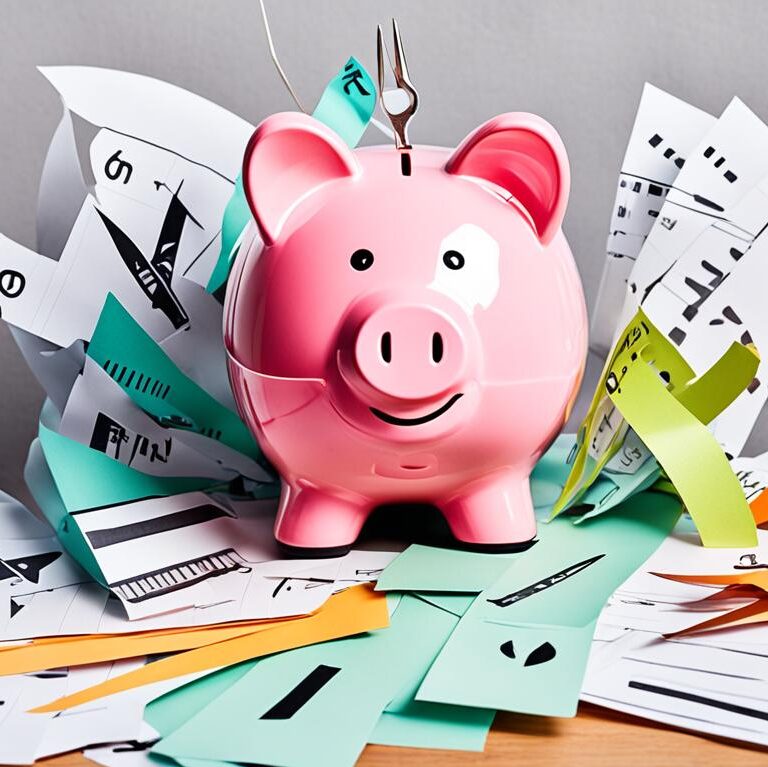“As an Amazon Associate I earn from qualifying purchases.”
Hey there, fellow budget-savvy green thumbs! Are you ready to dig into a world of savings? Let me share a personal story with you. A few years ago, when the economic downturn hit, my wallet took a hit too. But amidst the financial stress, I found solace in an unexpected place: my garden.
As I carefully tended to my plants, I realized that gardening wasn’t just a hobby; it was a recession beater, a way to save money while enjoying the beauty of nature. The more I delved into this frugal gardening journey, the more I discovered the incredible potential it held. It became my very own oasis of savings, providing fresh produce, stress relief, and a renewed sense of self-sufficiency.
Now, I want to share my secrets with you. In this article, we will explore the world of recession gardening and how it can transform your financial outlook. Together, we’ll uncover money-saving strategies, cost-effective techniques, and ingenious tips to help you embrace gardening even during the toughest of times.
So, grab your gardening gloves, dust off your trowel, and let’s embark on a journey that will not only fill your pantry with fresh produce but also fill your pockets with savings. Let’s dive into the wonderful world of gardening and discover how it can be your ultimate recession beater.
Key Takeaways:
- Discover how gardening can be a practical and cost-effective way to save money during tough economic times.
- Learn frugal gardening ideas that can help you embrace recession gardening.
- Explore the economic benefits of seed starting, composting, and cost-effective irrigation techniques.
- Uncover creative gardening tips for saving money while growing a diverse range of crops.
- Maximize small spaces with vertical and container gardening techniques.
The Thrifty Green Thumb: Embracing Recession Gardening
Discover the art of recession gardening and unlock the secrets to developing a green thumb on a budget. In these tough economic times, gardening can be a fulfilling and cost-effective hobby. Not only can it provide you with the satisfaction of growing your own food, but it can also help you reduce your grocery expenses. By embracing frugal gardening ideas, you can save money while enjoying the rewards of a bountiful garden.
Gardening during tough times doesn’t have to be a daunting task. With the right knowledge and strategies, you can create a thriving garden without breaking the bank. In this section, we will provide you with tips, tricks, and practical advice for recession gardening. From selecting budget-friendly plants to maximizing your garden’s yield, we have you covered. Let’s dive in and learn how to make your gardening journey both frugal and fruitful!
- Start with Seeds: Instead of purchasing costly ready-to-plant seedlings, consider starting your garden from seeds. This not only provides a wider variety of plants to choose from but also saves you money in the long run.
- Utilize Recycled Items: Look around your home for items that can be repurposed for gardening. Old containers or jars make excellent plant pots, and leftover wood can be used for building raised beds.
- Plant Perennials: Choose perennial plants that come back year after year, eliminating the need to replant annually. Perennials are not only cost-effective but also add beauty to your garden.
- Make Your Own Compost: Composting is an excellent way to recycle kitchen scraps and yard waste, creating nutrient-rich soil for your plants. By making your own compost, you can save money on purchasing fertilizers.
- Practice Companion Planting: Some plants naturally benefit each other when grown together. By practicing companion planting, you can enhance growth, deter pests, and optimize space utilization.
- Water Efficiently: Use water-saving techniques such as drip irrigation or collecting rainwater to reduce your water bill. By watering your plants efficiently, you can save money and conserve this precious resource.
Embracing recession gardening not only allows you to save money but also provides a sense of self-sufficiency and satisfaction. So roll up your sleeves, get your hands dirty, and start your frugal gardening journey today!
Garden Economics: Understanding How You Save Money by Gardening
When it comes to gardening, it’s not just about nurturing plants; it’s also about nurturing your bank account. Discover how you can save money by implementing simple yet effective strategies in your garden. From seed starting to composting and water conservation techniques, these money-saving garden strategies will help you embrace gardening on a budget.
Seed Starting vs. Store-Bought Plants
One of the first decisions you’ll face as a budget-conscious gardener is whether to start your plants from seeds or buy them from a store. While purchasing established plants may seem convenient, it can be costly. Instead, consider starting your plants from seeds. Not only is it more affordable, but it also offers a wider variety of plant options. With some basic equipment and a little patience, you can nurture your plants from seeds and save money in the process.
Another advantage of starting from seeds is the sense of fulfillment and accomplishment that comes from watching your plants grow from tiny seedlings into thriving specimens. It’s a rewarding experience that adds to the joy of gardening on a budget.
Composting 101: Turning Waste into Garden Gold
Composting is not only an environmentally friendly practice but also a great way to save money on soil amendments. Instead of purchasing expensive fertilizers, transform your kitchen scraps and yard waste into nutrient-rich compost for your garden. Composting not only reduces household waste but also enriches the soil, providing the necessary nutrients for your plants to thrive.
Get started with composting by collecting fruit and vegetable scraps, coffee grounds, and yard trimmings. Avoid adding meat, dairy, and oily foods to maintain a healthy compost pile. Mix the organic materials with a balance of green (nitrogen-rich) and brown (carbon-rich) components to create the ideal conditions for decomposition. Over time, you’ll have a rich, dark compost that will nourish your garden and keep your wallet happy.
Water Wisdom: Cost-Effective Irrigation Techniques
Watering your plants efficiently is crucial to both their health and your water bill. Instead of relying on traditional sprinklers that can waste water through evaporation, consider implementing cost-effective irrigation techniques. Drip irrigation systems deliver water directly to the root zone of your plants, reducing wastage and promoting efficient water usage.
Another water-saving technique is mulching. By applying a layer of organic mulch around your plants, you can help retain moisture in the soil, reducing the frequency of watering. Additionally, mulch acts as a natural weed suppressant, saving you time and effort spent on weed control.
By combining these water conservation strategies with proper watering techniques such as watering in the morning or evening to minimize evaporation, you can significantly reduce your water consumption and save money on your water bill.
Creative Crops: Ingenious Gardening Tips for Saving Money
Looking to save money while enjoying a diverse range of crops from your garden? Get ready to discover some creative and innovative gardening tips! By implementing these savvy strategies, you can maximize your yield and minimize your expenses, making your gardening endeavors recession-proof.

Companion planting is one such ingenious gardening tip that can help you save money while boosting the health and productivity of your plants. By strategically planting compatible crops together, you can naturally deter pests, enhance nutrient uptake, and even help with pollination. For example, interplanting marigolds with tomatoes can repel nematodes and other harmful insects, reducing the need for chemical pesticides.
Space-saving techniques are essential for those with limited gardening real estate. Vertical gardening is a fantastic way to maximize your space and grow more plants. Whether you have a small balcony or a compact backyard, you can utilize walls, fences, or trellises to cultivate climbing crops such as cucumbers, beans, and tomatoes. Not only does this save space, but it also adds an appealing visual element to your garden.
When it comes to pest control, opting for budget-friendly methods is the way to go. Instead of expensive and potentially harmful chemical sprays, consider using natural remedies. For instance, a simple homemade solution made from water, soap, and cayenne pepper can effectively repel common garden pests like aphids and slugs. This cost-effective approach ensures a healthier garden and more money left in your pocket.
A well-designed garden layout can also contribute to financial savings. Consider grouping plants with similar watering needs together, allowing for more efficient irrigation and reducing water waste. Additionally, rotating your crops each growing season can help control pests and diseases naturally, eliminating the need for costly treatments.
Gardening Tips for Saving Money
- Utilize companion planting to naturally deter pests and enhance plant health.
- Implement space-saving techniques like vertical gardening to make the most of limited space.
- Use budget-friendly pest control methods such as homemade remedies.
- Design your garden layout to maximize water efficiency and reduce the need for expensive treatments.
By incorporating these ingenious gardening tips into your gardening routine, you can cultivate a cost-effective and abundant garden, even in challenging economic times.
Compact Cash Savers: Maximizing Small Spaces for Budget Gardening
If you have limited space, don’t worry! With the right techniques, you can still create a thriving garden on a budget. In this section, we will explore two innovative gardening methods – vertical gardening and container gardening – that will help you make the most of small spaces.
Vertical Gardening: Growing Upwards to Save Money
Vertical gardening is a fantastic solution for compact areas where ground space is limited. By growing plants vertically on walls, fences, or trellises, you can create a stunning and space-saving garden. Not only does vertical gardening maximize your growing area, but it also contributes to a unique and visually appealing garden design.

One of the great advantages of vertical gardening is its ability to save money. Since you are utilizing vertical space, you can grow a greater variety of plants in a smaller area. This means you can grow more crops and herbs for your kitchen or even beautiful flowers to add charm to your outdoor space, all without breaking your budget.
Vertical gardening works well with various types of plants, including vining vegetables like tomatoes and cucumbers, as well as flowering plants like morning glories and ivy. By training these plants to grow vertically, you can reduce the need for large, expensive containers or extensive ground space.
Container Gardening: Versatile and Economical
Container gardening is another excellent option for gardening on a budget, especially if you have a small balcony, patio, or even just a windowsill. With containers, you have the flexibility to grow plants virtually anywhere, regardless of the available space.

Container gardening provides numerous benefits. Firstly, it is an incredibly versatile method of gardening. You can choose from a wide variety of containers, including pots, hanging baskets, and even repurposed items like old buckets or tires – the possibilities are endless!
Secondly, container gardening is budget-friendly. You can start with basic containers that are readily available or repurpose items you already have at home. Additionally, you can control the quality of the soil, ensuring your plants receive the nutrients they need for optimal growth.
Furthermore, container gardening allows for easier maintenance and pest control. With plants in containers, you can closely monitor their water needs and keep a closer eye on any potential pests or diseases. This means you can address issues promptly, preventing them from spreading and potentially saving you money on treatments.
| Vertical Gardening | Container Gardening |
|---|---|
| Utilizes vertical space | Can be done in small spaces |
| Maximizes growing area | Offers flexibility and versatility |
| Reduces need for large containers | Allows for better maintenance and pest control |
| Wide range of plant options | Budget-friendly and customizable |
Strategic Planting: Recession-Proof Garden Design
Designing your garden strategically is key to recession-proof gardening and maximizing your savings. By carefully planning your garden layout, selecting the right plants, and utilizing space efficiently, you can create a low-cost and sustainable environment that continues to provide savings year after year.
When it comes to recession-proof garden design, consider the following:
- Plan for Success: Before starting your garden, take time to plan and map out your space. Consider the amount of sunlight, soil conditions, and available water sources. Having a well-thought-out plan will ensure your garden thrives without unnecessary expenses.
- Select the Right Plants: Choose plants that are well-suited to your local climate and require minimal maintenance. Opt for perennials, which come back year after year, instead of annuals that require replanting. Additionally, focus on growing fruits, vegetables, and herbs that you use frequently to maximize your savings on grocery bills.
- Use Space Efficiently: Utilize every inch of your garden by employing space-saving techniques. Consider vertical gardening by growing plants on walls, trellises, or fences. This not only saves space but also adds a visually appealing element to your garden. Container gardening is another great option for small spaces. Use pots and planters to grow herbs, flowers, and even vegetables on patios or balconies.
“Strategic garden design is all about making the most of your resources and creating a thriving space that saves you money while providing a beautiful sanctuary.”
By implementing these strategic garden design principles, you can create a recession-proof garden that serves as a source of fresh produce, a tranquil oasis, and a cost-effective endeavor that brings joy and savings to your life.
Save Money by Gardening, Recession Beater
Gardening is not only a great way to save money during tough times, but it also offers a host of benefits beyond its economic advantages. By embracing gardening, you can reduce your grocery bills, improve your mental and physical well-being, and develop a rewarding hobby that brings you closer to nature.
One of the key takeaways from this article is the tremendous potential gardening has to help you save money. By growing your own fruits, vegetables, and herbs, you can significantly reduce your grocery expenses. Instead of spending money on store-bought produce, you can enjoy the satisfaction of harvesting your own fresh and organic ingredients right in your backyard.
In addition to the financial savings, gardening provides a sense of self-sufficiency and resilience during challenging times. By cultivating your own food, you become less reliant on external sources and can better navigate uncertain economic conditions. This feeling of empowerment can alleviate stress and anxiety, offering a much-needed reprieve from the pressures of daily life.
“Gardening is the purest of human pleasures.” – Francis Bacon
Furthermore, gardening offers a myriad of mental and physical health benefits. Spending time outdoors, taking care of plants, and connecting with nature has been shown to reduce stress, improve mood, and increase overall well-being. Gardening can be a therapeutic activity that allows you to escape the hustle and bustle of everyday life and find solace in the beauty of nature.
In conclusion, gardening is not just a way to save money during tough times – it is a recession beater that offers a multitude of advantages. From the financial savings to the mental and physical well-being it promotes, gardening is a valuable and rewarding pursuit. So why not start your own money-saving garden today and reap the benefits that gardening has to offer?
Thriving on a Dime: Low-Cost Garden Maintenance
Even with a tight budget, you can maintain a beautiful garden that flourishes without breaking the bank. In this section, we will share cost-saving techniques and practical tips for low-cost garden maintenance. By implementing these strategies, you can ensure that your garden remains healthy and vibrant without straining your finances.
DIY Pest Control: Natural and Affordable Solutions
Dealing with pests in your garden can be frustrating and expensive if you rely on store-bought chemical treatments. However, there are plenty of effective and low-cost DIY pest control solutions that can help you eliminate unwanted bugs and critters. By using natural remedies, such as homemade sprays made from garlic, neem oil, or dish soap, you can keep pests at bay without harming the environment or your wallet. Embrace homemade traps and barriers, like beer traps for slugs or copper tape to deter snails, as a cost-effective way to protect your plants.
Garden Tool Care: Prolonging the Life of Your Investment
Proper care and maintenance of your garden tools not only extends their lifespan but also saves you money in the long run. Regularly clean and oil your tools to prevent rust and maintain their sharpness. Consider investing in high-quality, durable gardening tools that are designed to last, ensuring that you won’t have to replace them frequently. By taking the time to properly care for your tools, you can avoid unnecessary expenses and ensure that they function optimally each season.
Conclusion: The Sustainable Savings of Gardening
As we conclude our exploration of gardening as a recession beater and a budget-saving activity, it’s clear that gardening is not just a hobby, but a sustainable and cost-effective way to improve your finances. By implementing the tips and strategies discussed throughout this article, you can continue to enjoy the long-term financial benefits of gardening while embracing a greener lifestyle.
Remember, gardening on a budget doesn’t mean compromising on the quality of your harvest. With careful planning, economical practices, and a little creativity, you can cultivate a bountiful garden that yields impressive savings. By starting your plants from seeds, composting your kitchen waste, and adopting cost-effective irrigation techniques, you will not only reduce your expenses but also rely less on store-bought produce.
Gardening is a recession-proof investment that keeps on giving. Not only does it save you money, but it also provides a source of stress relief and promotes self-sufficiency. So, why not embrace the sustainable savings of gardening today? Start digging, planting, and growing your way to a budget-friendly and environmentally conscious lifestyle. And don’t forget to share your success stories with fellow green thumbs, because together, we can all thrive on a dime!
FAQ
How can gardening help me save money during tough economic times?
What is recession gardening, and how can I embrace it?
Should I start my seeds or buy store-bought plants?
How can composting help me save money in my garden?
What are some cost-effective irrigation techniques for my garden?
Are there any gardening tips for saving money?
How can I maximize small spaces for budget gardening?
How can I design a recession-proof garden?
What are some low-cost garden maintenance tips?
How can gardening offer sustainable savings?
Source Links
- https://www.rba.gov.au/education/resources/explainers/recession.html
- https://www.whitehouse.gov/wp-content/uploads/2022/12/TTC-EC-CEA-AI-Report-12052022-1.pdf
- https://www.forbes.com/advisor/investing/what-is-a-recession/
- https://www.whitehouse.gov/cea/written-materials/2022/07/21/how-do-economists-determine-whether-the-economy-is-in-a-recession/
- https://www.businessinsider.com/personal-finance/recession-vs-depression
- https://www.mckinsey.com/featured-insights/mckinsey-explainers/what-is-a-recession
- https://www.investopedia.com/terms/d/demandshock.asp
- https://en.wikipedia.org/wiki/Recession
- https://www.mckinsey.com/capabilities/risk-and-resilience/our-insights/somethings-coming-how-us-companies-can-build-resilience-survive-a-downturn-and-thrive-in-the-next-cycle
“As an Amazon Associate I earn from qualifying purchases.”

